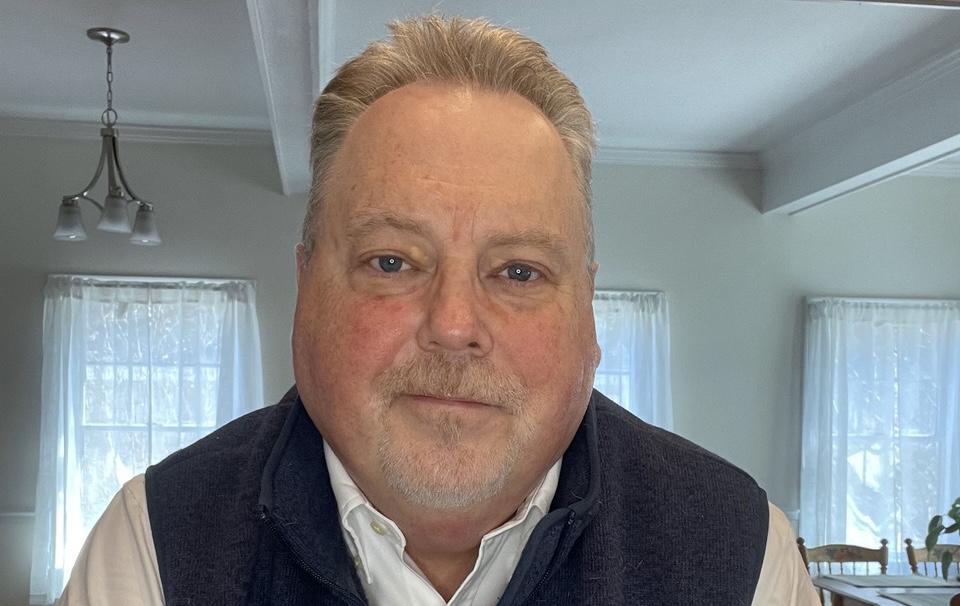Guest Voice: Learning about MG advancements gives us hope
MG research and applied technologies allow us to live our lives as best we can

Despite working in life sciences, Thomas Bartlett had never heard of myasthenia gravis until he was diagnosed with it. (Photo by Thomas Bartlett)
As the result of his professional background working at companies such as Apple and Dell and a life sciences consulting firm, Thomas Bartlett found himself needing to make a difference in the world of myasthenia gravis (MG). He began by consulting for pharmaceutical companies in the MG space and now speaks about applied technologies to improve quality of life through real-time data acquisition and analysis. That includes leveraging wearables and textiles to measure data to better understand and prevent catastrophic outcomes with MG.
When I was diagnosed with myasthenia gravis in July 2019, I knew nothing about the disease. I had no idea what the implications were, nor if any treatments for it existed.
At the time, I was head of global sales for a life sciences consulting firm. I thought I knew quite a bit about science and applied technologies. Little did I know how little I really knew.
The firm was made up of PhD scientists with a deep understanding of how technology could help reduce the time spent finding answers to very complex scientific questions. We engaged with global pharmaceutical companies, the National Institutes of Health, the Department of Agriculture, the National Cancer Institute, the Centers for Disease Control and Prevention, and leading academic institutions around the world. In all of my conversations, not once did I ever hear of a disease called myasthenia gravis.
That was almost six years ago. Even though I wasn’t a scientist, I thought I was well informed because of the conversations I’d had with colleagues. I was very wrong. I had much to learn, and I’d like to share what I now know for Myasthenia Gravis Awareness Month.
MG is a rare disease, so the first thing I needed to do was learn what a rare disease is. How are rare diseases classified? This designation is not a random act. Is it designated to make a diagnosis “sound” more devastating?
In the U.S., a disease is designated as rare when there are fewer than 200,000 known cases. MG has fewer than 100,000 diagnosed individuals. That’s 0.03% of the U.S. population — which is not a lot of people.
There are approximately 7,000 known rare diseases. Of those, only a small percentage have a therapy approved by the Food and Drug Administration (FDA). I consider MG patients to be very lucky in this world of rare disease because we do have treatments available!
When I was diagnosed, the FDA had approved only one therapy for MG, which was still amazing given the number of rare diseases that exist and the percentage that don’t have approved therapies. Almost six years later, four companies have approved therapies for MG, and a number of others are in clinical trials. Other companies are addressing even rarer versions of MG.
I think hope in the MG community should be high right now. So it’s imperative for publications, foundations, and support organizations to begin developing more educational programs to virtually update MG patients.
Amazing technologies for emotional support can be leveraged regionally and globally not only to share our stories, but also where and how to find fundamental information. We need to know about things like clinical trials or types of wearable technology, such as watches and clothing, that are well-suited for tracking digital data in real time.
In six years, the MG space has gone from old therapies, which are helpful, and one FDA-approved therapy to being on the cusp of amazing, new treatments to improve patients’ quality of life.
We are at a point where we can better understand the effects of the disease in real time by collecting and analyzing data. This will ultimately provide the ability to predict and potentially preempt catastrophic events through data awareness.
It’s a very exciting time for MG research and applied technologies that allow us to live our lives as best we can.
Hope is a big deal for those of us with MG — and it’s growing as we speak.
To submit your own Guest Voice for publication on Myasthenia Gravis News, please email your idea to our columns manager at [email protected] with the following included in the subject line: “Guest Voice: Myasthenia Gravis News.”
Note: Myasthenia Gravis News is strictly a news and information website about the disease. It does not provide medical advice, diagnosis, or treatment. This content is not intended to be a substitute for professional medical advice, diagnosis, or treatment. Always seek the advice of your physician or other qualified health provider with any questions you may have regarding a medical condition. Never disregard professional medical advice or delay in seeking it because of something you have read on this website. The opinions expressed in this column are not those of Myasthenia Gravis News or its parent company, Bionews, and are intended to spark discussion about issues pertaining to myasthenia gravis.






Leave a comment
Fill in the required fields to post. Your email address will not be published.